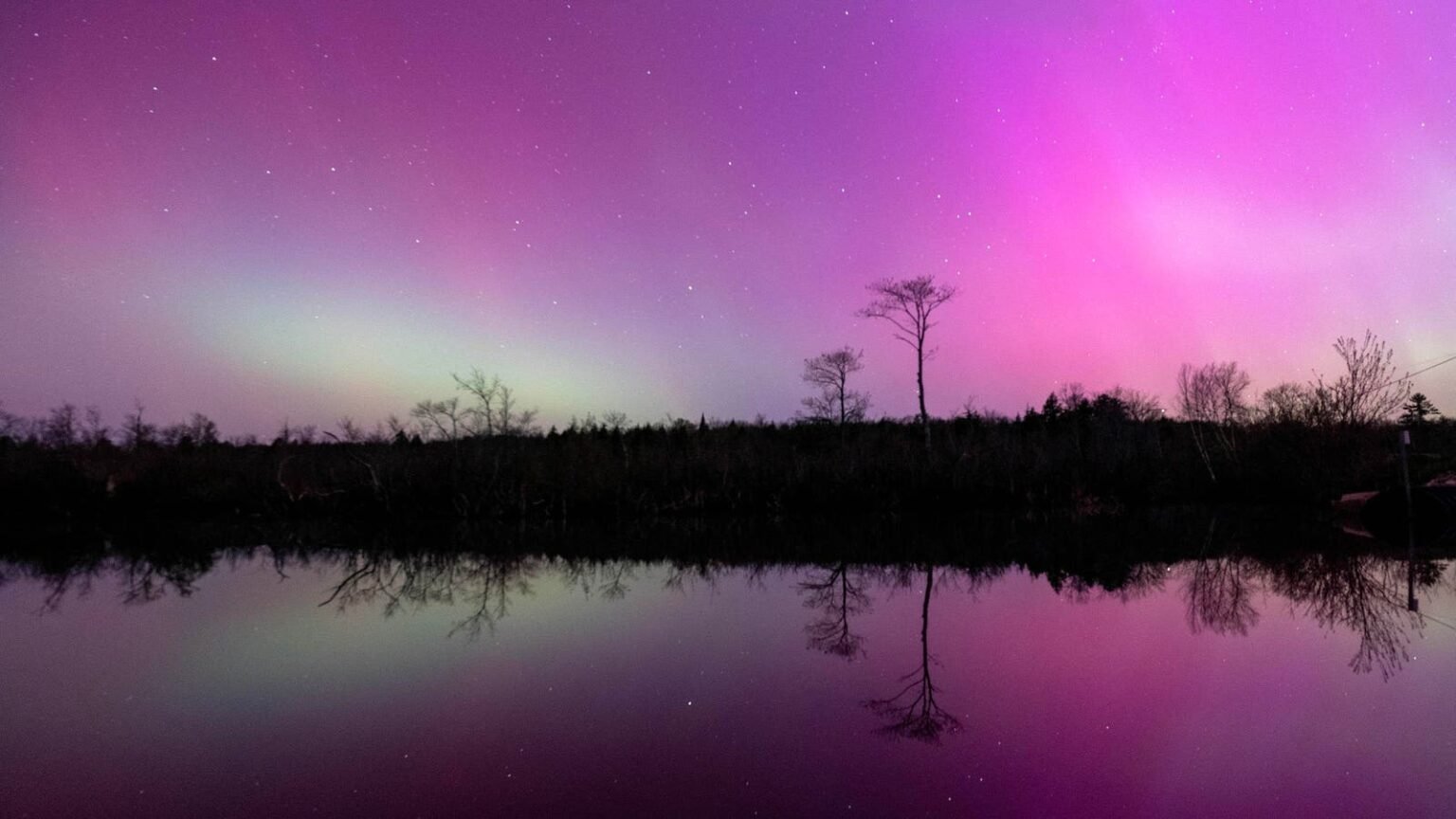A rare opportunity to witness the Northern Lights is set to occur on Tuesday night, with the lights expected to be most visible in states from New York to Washington. This phenomenon is due to a solar eruption that took place over the weekend, leading to a moderate geomagnetic storm. The aurora has a Kp index of five, indicating that the lights will appear brighter and move further from the poles, offering a mesmerizing display for observers under the right conditions. Additionally, the National Oceanic and Atmospheric Association has issued a G2 geomagnetic storm watch for Wednesday morning between 1:00 a.m. and 4:00 a.m. EDT, as a result of a coronal mass ejection that occurred on Sunday. This storm has the potential to disrupt radio frequencies and spacecraft in addition to providing a stunning visual display of the Northern Lights.
The forecast suggests that the aurora may be visible in parts of northern and upper Midwest states, stretching from Maine to Washington. While it is difficult to pinpoint the exact locations where the lights will be visible, states within the aurora’s potential view line include Alaska, Washington, Idaho, Montana, North Dakota, South Dakota, Minnesota, and others. To catch the best glimpse of the Northern Lights, observers are advised to travel as close to the poles as possible, avoid city lights and light pollution, monitor weather forecasts for optimal viewing conditions, and find a prime vantage point such as a hilltop. The lights are typically most active between 10 p.m. and 2 a.m., making this period the ideal time to witness the spectacle.
For those interested in capturing the beauty of the Northern Lights through photography, smartphone cameras are recommended as they are sensitive enough to pick up the aurora even when it is not visible to the naked eye. Turning on night mode on smartphone cameras can help increase exposure and enhance the chances of capturing stunning images of the lights. Tourist websites in areas where the Northern Lights are often visible, like Iceland, also offer photography tips to help visitors make the most of the experience. The lights are expected to be particularly active due to Solar Cycle 25, the sun’s 11-year cycle that has been causing geomagnetic storms and increased solar activity. NASA predicts that Solar Cycle 25 will continue until 2026, with the peak expected to occur between late 2024 and early 2026. The cycle is estimated to peak with 115 sunspots, which are the origin of geomagnetic storms. Although the maximum of Solar Cycle 25 has not yet been reached, scientists believe that the sun’s activity has been more intense than anticipated, potentially leading to more geomagnetic storms in the coming years.
In recent months, solar activity has been unusually busy as the sun’s 11-year solar cycle approaches its anticipated peak between late 2024 and early 2026. Sunspots are expected to intensify over the next year, triggering more geomagnetic storms that could offer breathtaking views of the Northern Lights. The National Oceanic and Atmospheric Association has emphasized the potential for the lights to be visible across a wide geographic area, spanning from New York to Washington, and has issued a geomagnetic storm watch for Wednesday morning. This storm has the potential to disrupt radio frequencies and spacecraft in addition to providing a spectacular visual display of the Northern Lights. As Solar Cycle 25 continues to unfold, opportunities to witness the aurora borealis are likely to increase, offering a rare and unforgettable experience for observers across the United States.

